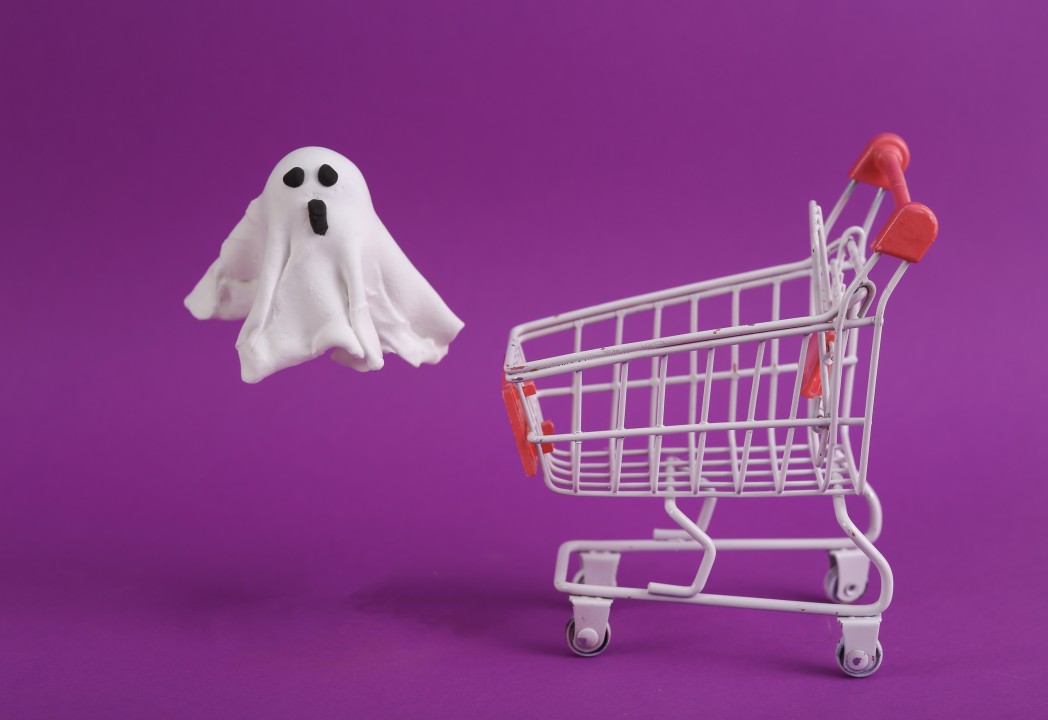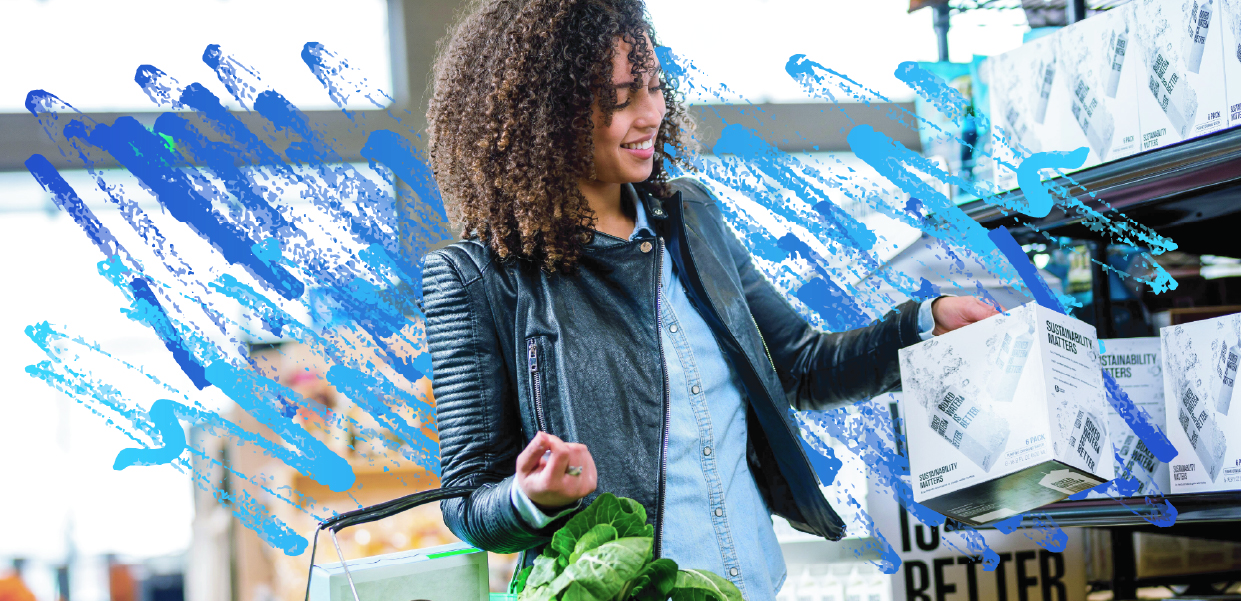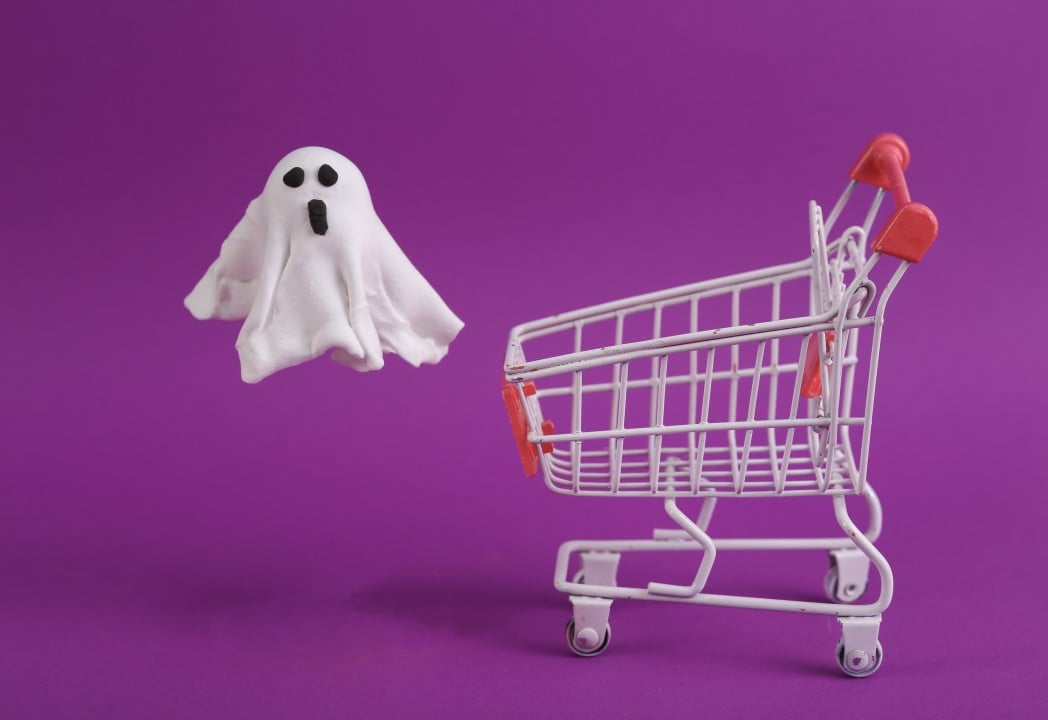Retail Ghostbusting 101: How to Prevent and Mitigate Phantom Inventory


When there is a discrepancy between the amount of inventory on record and the number of SKUs actually available on store shelves, this frightening phenomenon is referred to as “phantom inventory.”
Items can go missing for a variety of reasons, but the most common include theft, misplacement, mislabeling, and poor internal communication.
As retail stores have grown in both size and complexity, phantom inventory has become increasingly more prominent and more difficult to address, especially within fast-moving product categories that are challenging to keep track of.
The most obvious consequence of phantom inventory is unaccountable lost revenue. When products are stolen or missing, retailers and CPG companies must absorb the cost with zero compensation. But an even more costly consequence of phantom inventory is the effect it has on demand planning and order replenishment accuracy.
When inventory management software relies on bad data to project future ordering quantities, the result is drastic, costly over/understocks. Moreover, phantom inventory can ultimately damage customer satisfaction and loyalty, as shoppers may be unable to find the products they’re looking for.
To end the nightmare of phantom inventory, there are two main approaches that teams can take: prevention and mitigation.
The former focuses on addressing controllable issues such as poor communication and inefficient shelf replenishment processes, while the latter seeks to mitigate the effects of what cannot be controlled (such as theft).
Some combination of both approaches is ideal, so let’s take a look at some of the most viable strategies for each one.


Strategy 1: Preventing Phantom Inventory
Misplaced/mislabeled inventory and poor communication are two common causes of missing inventory, but they can be easily reduced or eliminated by optimizing your operational processes.
The most effective way to achieve this is to adopt software with well-rounded tasking and communication features that keep your entire team on the same page.
A variety of software can be used for this purpose, but retail execution software is the most natural and cost-effective fit for the in-store environment. It works by giving leadership teams an efficient way to assign work, delegate tasks, and verify performance from one centralized location, primarily through desktop view.
Think of it as a control tower for store-oriented work.
On the flip side, it also gives frontline teams an efficient way to keep track of and complete their assigned work through a mobile app format that is ideal for on-the-go work. Store associates and field reps use the app for all their daily tasks, from following shelf replenishment instructions to submitting proof-of-performance requests.
Think of it as a frontline employee's personal guide for all things task completion.
An added benefit of retail execution software is the ability to communicate seamlessly with your team, as opposed to relying on verbal communication, text messages, emails, and third-party apps. Retail execution software allows teams to access all their communication needs in the same app they use to review and complete work, which is not only more efficient but also more compliant.
When an entire workforce is unified on the same platform, it becomes much less likely that tasks will fall to the wayside. And even if they do, leadership teams are able to quickly identify and resolve issues should they arise thanks to enhanced visibility.
This level of accountability and interconnectedness is proven to reduce out-of-stock occurrences and inventory discrepancies and improve promotional compliance and workforce coordination.


Strategy 2: Mitigating the Effects of Phantom Inventory
Even if your shelf replenishment processes are completely dialed, phantom inventory can still occur. Retailers are adopting all sorts of new theft prevention strategies, but there is only so much that can be done.
For enterprise-level retailers and CPG companies, some level of inventory discrepancy will almost always occur. And when it does, it is imperative that it is identified and resolved as quickly as possible; otherwise, inaccurate on-shelf availability data will tarnish your forecasting predictions and order replenishment quantities.
As of now, there are primarily three technologies that can help teams identify and resolve phantom inventory:
1) Photo AI (Computer Vision)
2) Smart Shelves
3) Frontline Mobile Software
Photo AI
This emerging technology is an exciting development for the retail industry. By training artificial intelligence to recognize SKUs and on-shelf quantities, retailers can leverage computer vision technology to monitor inventory levels with unprecedented efficiency. The problem is that the technology is not yet mature enough to be utilized at a large scale, and it is unclear when or if it ever will be.
In order for photo AI to become a viable solution for mitigating phantom inventory, it must first be able to recognize SKUs and order quantities with near-perfect precision. However, many packaging and display types are difficult for AI to recognize right now due to the wide array of SKU designs. Shelf obstructions and misplaced inventory also pose a challenge for this technology.
Until packaging and displays are standardized to meet the needs of computer vision, this approach will be hard to implement. For the time being, store associates and field reps will still need to cross-validate AI results by walking the aisles and counting inventory, as they already do (thus undermining the intended efficiency gains of photo AI).
If or when this technology overcomes these hurdles, it will all but eliminate inventory discrepancies. But for the time being, it is not the most viable solution.
Smart Shelves
This is another emerging technology that could be a game changer for phantom inventory mitigation. It works by integrating weight sensors into shelves and displays so that on-shelf availability can be instantaneously tracked when shoppers pull items off the shelves. Like photo AI, though, it has a few obstacles standing in its way.
The first is cost. Implementing this technology throughout an entire store, for all stores, will cost retailers a significant amount of money. If there were no doubts about its viability, this cost would be well worth the investment, but there are still some issues that need addressed.
For example, if items are removed from their display and misplaced somewhere else, retailers will still have an inaccurate view of inventory. Furthermore, many display types are not suitable for weight sensors. Center-store shelves are the most natural fit, but many other categories and display types would not be compatible, resulting in the need for inefficient cross-validation efforts from frontline teams.
Weight sensors may have value for specific use cases within stores, but they will most likely never be an all-encompassing solution for tracking on-shelf availability.
Frontline Mobile Software
Retail execution software, which we mentioned earlier, is not only a great way to prevent inventory discrepancies but is also the most viable way for teams to mitigate the impact of phantom inventory should it occur.
Counting on-shelf quantities by hand is already part of the to-do list for most in-store teams. And as of now, it is also the most precise and efficient way to track on-shelf availability. With photo AI and smart shelves, frontline teams will still be needed to cross-validate results for the foreseeable future, resulting in a counterproductive duplication of resources.
It is important that retailers and CPG teams to experiment with these emerging technologies, but it also important to recognize that they fail to adequately address the problem of phantom inventory right now. Mobile retail execution software, on the other hand, gives teams a viable and efficient way to track on-shelf availability.
As frontline employees complete in-store work, they can quickly count and record inventory levels in a mobile app that is integrated with your inventory management software. If they identify a discrepancy between on-hand and on-record inventory, they can immediately note the issue so that leadership teams (and forecasting algorithms) can work off accurate and reliable data.
Furthermore, if they encounter misplaced items or other on-shelf anomalies, they can quickly communicate with team members and resolve the issue before it ripples down the supply chain. Some retail execution software even allows frontline users to place ad-hoc orders right in front of the shelf for unprecedented replenishment efficiency.
Although it may be impractical to install photo AI capable camera throughout an entire store to monitor on-shelf quantities, there is promising potential in integration photo AI into the mobile retail execution software. For example, frontline employees could scan a shelf with their mobile phone and have the AI quickly count SKUs. If for some reason the software is unable to accurately count the products, the employee could then record the SKU count manually.
This solution would be the most efficient and immediately viable solution for tracking on-shelf availability, but it has not yet reached market maturity. For now, the most effective prevention and mitigation strategy for phantom inventory is frontline empowerment, and no technology does this better than retail execution software.
Want to discuss the latest retail trends with other industry leaders? Subscribe to the Shelf Help newsletter on LinkedIn and join the conversation.




